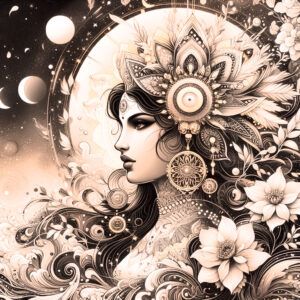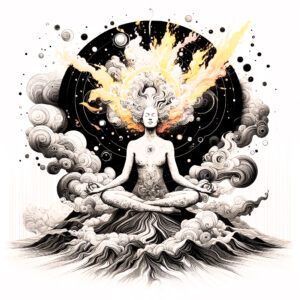
CONCEPT:
Navarasa
Pronunciation:
/ˈnɑːvərəsə/
Definition:
Navarasa refers to the nine fundamental emotions or aesthetic essences recognized in Indian performing arts, particularly in Bharatanatyam (classical Indian dance) and Sanskrit drama. These nine emotions are Shringara (love/beauty), Hasya (laughter/comedy), Karuna (compassion/pathos), Raudra (anger/fury), Veera (heroism/courage), Bhayanaka (fear/terror), Bibhatsa (disgust/repulsion), Adbhuta (wonder/amazement), and Shantha (peace/tranquility).
Other Concepts
Deeper Understanding
Navarasa, a cornerstone of Indian performing arts, encapsulates the nine essential emotions or rasas that artists strive to evoke through their performances. This concept, integral to forms such as Bharatanatyam and Sanskrit drama, serves as a framework for conveying the breadth of human emotional experience.
The origins of Navarasa are deeply embedded in ancient Indian cultural and philosophical texts, most notably the Natya Shastra. Attributed to the sage Bharata Muni and composed between 200 BCE and 200 CE, the Natya Shastra is a comprehensive treatise on the performing arts, including dance, music, and theater. It outlines the theory of rasas, proposing that all human emotions can be distilled into nine fundamental essences. These rasas are:
Shringara (शृङ्गार, Śṛṅgāra): Love and beauty, often depicted through romantic and aesthetic elements.
Hasya (हास्य, Hāsya): Laughter and comedy, highlighting humor and joy.
Karuna (करुण, Karuṇa): Compassion and pathos, expressing sorrow and empathy.
Raudra (रौद्र, Raudra): Anger and fury, showcasing wrath and intensity.
Veera (वीर, Vīra): Heroism and courage, embodying valor and bravery.
Bhayanaka (भयानक, Bhayānaka): Fear and terror, evoking dread and anxiety.
Bibhatsa (बीभत्स, Bībhatsa): Disgust and repulsion, highlighting aversion and loathing.
Adbhuta (अद्भुत, Adbhuta): Wonder and amazement, reflecting awe and astonishment.
Shantha (शान्त, Śānta): Peace and tranquility, representing calm and serenity.
Each rasa is associated with specific gestures, movements, and facial expressions, meticulously detailed in the Natya Shastra. For instance, Shringara might be conveyed through graceful, flowing movements and soft expressions, while Raudra would be depicted with vigorous, forceful actions and intense facial contortions.
The Navarasa concept underscores the belief that the purpose of art is not merely to entertain but to evoke and communicate emotions, creating a shared emotional experience between the performer and the audience. This interaction is central to the aesthetic experience in Indian classical arts, where the successful evocation of rasa is seen as a marker of artistic excellence.
Scientific explorations into the Navarasa have drawn parallels with contemporary studies in psychology and neuroscience, examining the neurobiological basis of emotions and their expression through art. Research by Brown, Martinez, and Parsons (2004) delves into the neural underpinnings of dance and its capacity to convey emotion, suggesting a universal neurobiological foundation for artistic expression.
The relevance of Navarasa extends beyond the realm of performance. It offers a profound understanding of human emotions and their expressions, applicable in therapeutic contexts to help individuals recognize and process their feelings. The Navarasa framework can aid in emotional regulation, offering a structured approach to exploring and articulating complex emotional states.
In the rich tapestry of Indian performing arts, Navarasa stands out as a testament to the sophisticated understanding of emotion in ancient Indian aesthetics. It continues to inform and inspire, serving as a vital link between artistic tradition and emotional expression.
References
Bharata Muni. Natya Shastra. Translated by Manomohan Ghosh, Asiatic Society of Bengal, 1951.
Brown, Steven, Michael J. Martinez, and Lawrence M. Parsons. “The Neural Basis of Human Dance.” Cerebral Cortex, vol. 16, no. 8, 2006, pp. 1157-1167.
Schechner, Richard. Performance Theory. Routledge, 1988.

